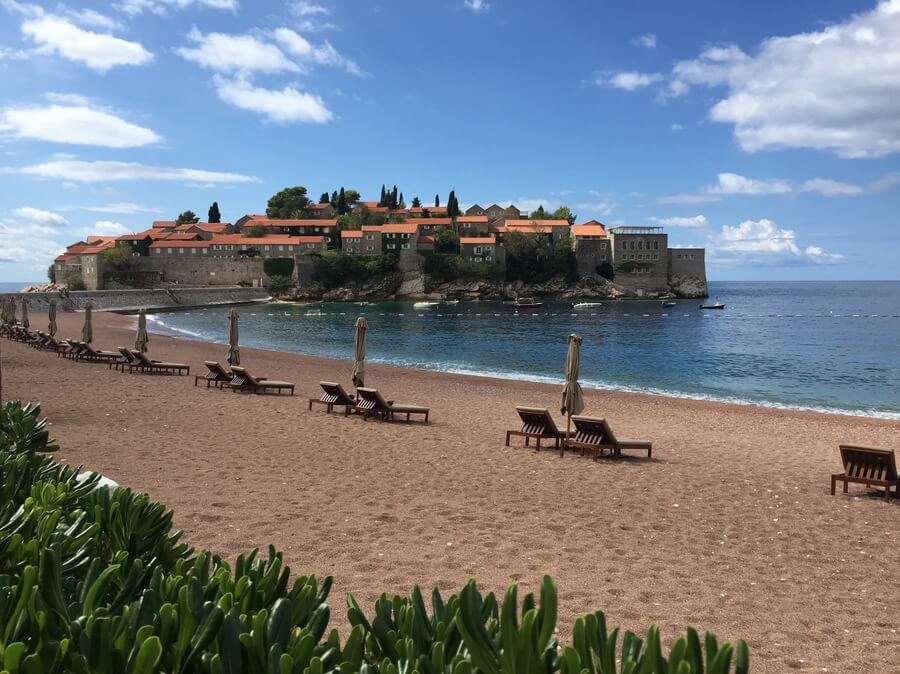Montenegro Pulse contains affiliate links and is a member of the Amazon Services LLC Associates Program. If you make a purchase using one of these links, I may receive compensation at no extra cost to you. See my disclaimer for more information.
Cetinje: 14 Best Things to Do in Cetinje, Montenegro
Discover all there is to see and do in Cetinje, Montenegro the historic capital of the Kingdom of Montenegro.
Cetinje (pronounced TSEH-teen-yeh) is a surprisingly charming destination in Montenegro that makes for the ideal day trip or relaxed and authentic stay away from the tourist hotspots.
This tiny town has been described as a mini European capital and it’s a good description. The main street is lined with small, pastel-coloured, low-rise buildings.
The royal palace is small in comparison to other European capitals. And you’re never more than a five minute walk from anything.
Contents
Things to
See and Do in Cetinje | Getting to Cetinje | Cetinje Restaurants
Cetinje
Weather | Cetinje Accommodation
Cetinje was founded in 1482 and became the political and religious center of Montenegro.
But, it wasn’t until Montenegro was declared an independent country at the Berlin Congress in 1878 and it became a European capital that Cetinje began to thrive. Embassies were built, diplomats arrived and Cetinje enjoyed being the centre of a modern European state.
Cetinje’s reign as capital of Montenegro ended in 1946 when the capital was moved to Podgorica, but Cetinje is still the best place to discover Montenegro’s history and culture.
Here, you can visit the former royal palaces, historic churches and explore the national museum. Not much has changed since the 19th century and it’s easy to imagine Cetinje in its heyday.
Despite its attractions and although it’s very easy to get to from the coast, Cetinje hasn’t been overrun with tourists.
It’s probably one of the most underrated destinations in Montenegro… which makes it perfect if you’re looking for a change from the tourist hotspots of Kotor and Budva.
Cetinje has a laid back feel and it’s the kind of place you can blend in with the locals leisurely sipping coffee and soaking up the sun.
You can easily spend a contented morning wandering through the attractions, enjoy a reasonably-priced lunch in the town center and then take a hike or read a book in the shade of the ancient trees in the royal court garden.
Things to See and Do in Cetinje
1. Cetinje Monastery - Monastery of St Peter
 Cetinje Monastery. Image: Deposit Photos
Cetinje Monastery. Image: Deposit PhotosCetinje Monastery was built in 1701 by Danilo Petrović, Montenegro’s ruler at the time. It sits on the ruins of an older monastery, which was built when Cetinje was first founded by Ivan Crnojević in 1484.
Cetinje Monastery is open to visitors and you can explore the church dedicated to the Birth of the Virgin, which houses the relics of St Peter of Cetinje, the right hand of John the Baptist and a piece of the Holy Cross.
The monastery has a rich treasury, unfortunately it’s only open to groups so you can’t visit it if you’re exploring Cetinje on your own or in a small group.
Cetinje Monastery is an Orthodox monastery. When visiting Cetinje Monastery you’ll need to dress modestly and taking photos is forbidden.
Address: Cetinje Monastery, Cetinje, Montenegro
Opening hours: 8am – 8pm daily
Entrance fee: Free
2. The National Museum of Montenegro
You can buy a combined ticket that includes all four locations and the mausoleum in Lovćen National Park for €20 per person.
The National Museum of Montenegro is spread over four different locations in Cetinje, all within walking distance of each other. The four locations are:
- King Nikola’s Court
- Vladin Dom - former government building (historic and art collections)
- The Bilijarda (Njegoš’ museum and relief map of Montenegro)
- Ethnographic museum
3. King Nikola's Court
This red building is in the central square in the middle of town and can't be missed. It's been very well preserved and is full of period furniture and antiques - most being exquisite gifts from foreign leaders.
The price of entrance includes an English-speaking guide who'll take you through the entire museum.
The back of the court leads to the Royal Court Garden which is a nice spot for a stroll or spreading a picnic blanket.
Address: Dvorski Trg, Cetinje
Opening hours: 9am - 5pm 1st April - 30th November, 9am - 4pm 1st December - 31st March
Entrance: €5 or combined ticket
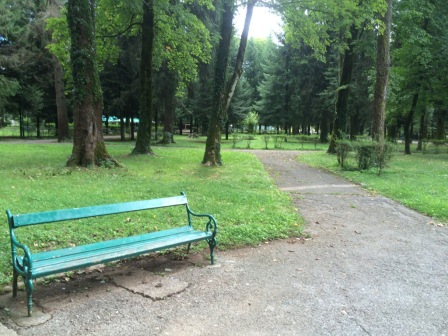 Cetinje Park behind King Nikola's Palace
Cetinje Park behind King Nikola's Palace4. Vladin Dom - Former Government Building
The former government building that was built in 1910 houses the historical and art museums. The historical museum has well-curated displays of exhibits from Montenegro’s first settlements through to recent history.
The art museum has a large collection of paintings including an icon of Our Lady of Philermos, which is believed to have been painted by Saint Luke 15 years after the Ascension of Jesus. For this icon the Montenegrin capital was the end of a journey that started in the 12th century.
Address: Novice Cerovića, Cetinje
Opening hours: 9am - 5pm 1st April - 30th November, 9am - 4pm 1st December - 31st March
Entrance: Historical museum €3, art museum €4 or combined ticket
5. The Bilijarda/Njegoš Museum
 The Bilijarda. Image: Deposit Photos
The Bilijarda. Image: Deposit PhotosThe Bilijarda (pronounced billy-arda) is the former residence of Petar II Petrović-Njegoš, Montenegro’s prince-bishop and poet in the 19th century. The Bilijarda was built in 1838 and it got its name because it housed Montenegro’s first billiards table, which Njegoš brought back from Italy. It took 50 men to carry the table up the Ladder of Kotor to Cetinje!
The Bilijarda is a museum of Njegoš’ personal belongings and furniture. It also has a huge relief map of Montenegro that was made by the occupying Austro-Hungarians in 1917. At the back you’ll find a lapidarium (stone museum) where stone remnants (including stećci tombstones) from Montenegro’s archaeological sites are displayed.
Address: Novice Cerovića, Cetinje
Opening hours: 9am - 5pm 1st April - 30th November, 9am - 4pm 1st December - 31st March
Entrance: Bilijarda €3, Montenegro relief map €2 or combined ticket
6. Ethnographic Museum
The ethnographic museum lies across the street from King Nikola’s Palace. It has collections of traditional Montenegrin dress, costumes, jewellery and embroidery.
Address: Dvorski Trg, Cetinje
Opening hours: 9am - 5pm 1st April - 30th November, 9am - 4pm 1st December - 31st March
Entrance: €3 or combined ticket
7. Njegoševa Ulica - The Main Street
The main street through Cetinje is full of pretty, low-rise, pastel-coloured buildings with cafes, boutiques and historic buildings. Many of the buildings lie in ruins, but they have temporary coverings showing what they were eg. the first girls’ school etc.
Keep an eye out for Djukanović’s Palace, which is rundown but has some beautiful sculptures at the front and gives you an idea of what Cetinje was like in its heyday.
Address: Njegoševa Ulica, Cetinje
8. The Blue Palace
 The Blue Palace. Image: Deposit Photos
The Blue Palace. Image: Deposit PhotosThe Blue Palace is the official residence of Montenegro’s president. Since Montenegro’s capital is now in Podgorica you’re unlikely to catch a glimpse of the president, but it’s often used for official business and hosting foreign dignitaries.
Locals joke that if you sneak up to the gate and manage to run past fast enough you’ll catch the guards at the entrance playing cards!
Address: Plavi Dvorac, Njegoševa Ulica, Cetinje
9. Ćipur Church
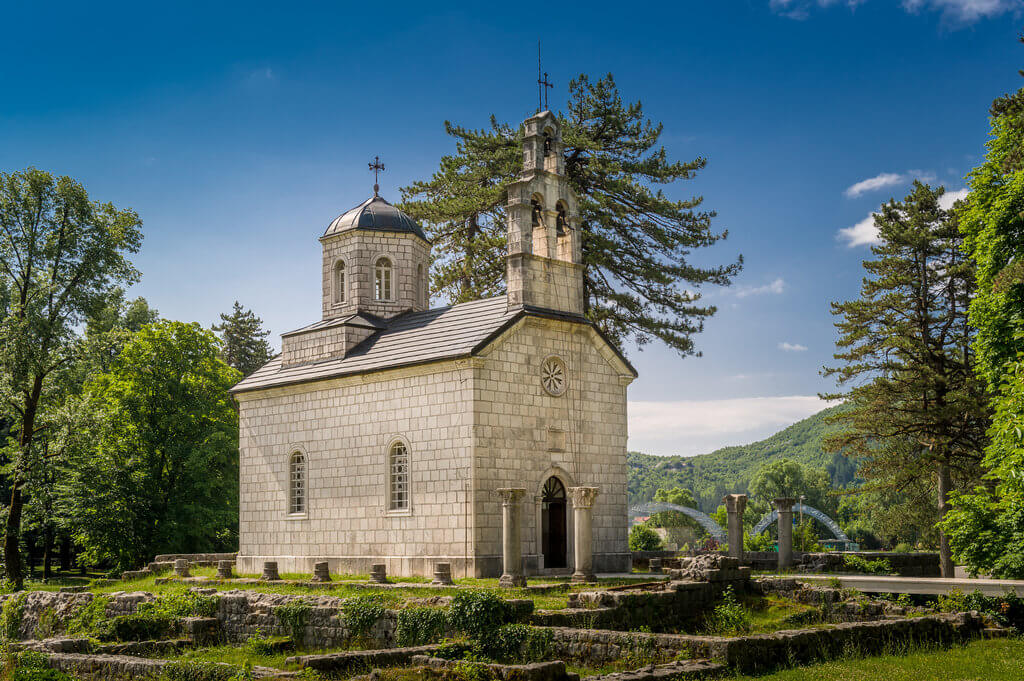 Ćipur Church. Image: Deposit Photos
Ćipur Church. Image: Deposit PhotosAcross the road from King Nikola’s Palace you’ll find Ćipur Church, which was built on the site of a 15th century temple and bishopric. King Nikola had this church built and he and his wife, Milena, are buried here.
When visiting the church you can see the exposed ruins of the 15th century monastery surrounding it.
Address: Ćipur Church, Cetinje
10. Vlaška Church
Vlaška Church was built in 1450 on the site of a Bogumil necropolis which was marked by ornate, stone tombstones called stećci. There were around 150 stećci on the site but only two are left at the site. The two left are said to be from the graves of Bajo Pivljanin, a great Montenegrin soldier, and his wife. You can also find stećci at two sites in Žabljak.
There’s another unusual tombstone in the graveyard that reads ‘Sacred to the memory of Edith Mary Emily, beloved child of Walter and Ellen Baring, died 7th November 1889, aged 5 months & 17 days’. It’s assumed Edith was the child of a British diplomat.
It was originally built with sticks and mud, but it’s been rebuilt three times and got its current form in 1864. In 1897 a fence was built around the church and it was made from the 1,550 Ottoman rifles that were captured in the 1858 Battle of Grahovac.
Address: Vlaška Church, Cetinje
11. Orlov Krš – Eagle Hill
A short hike from Cetinje Monastery brings you to Orlov Krš, where you’ll find the mausoleum of Danilo I, the founder of the Petrović Dynasty. Along the way, keep an eye out for the guvno, a stone circle that was used by leaders as a place to gather and make important decisions.
Address: Orlov Krš, Cetinje
12. Old Embassies
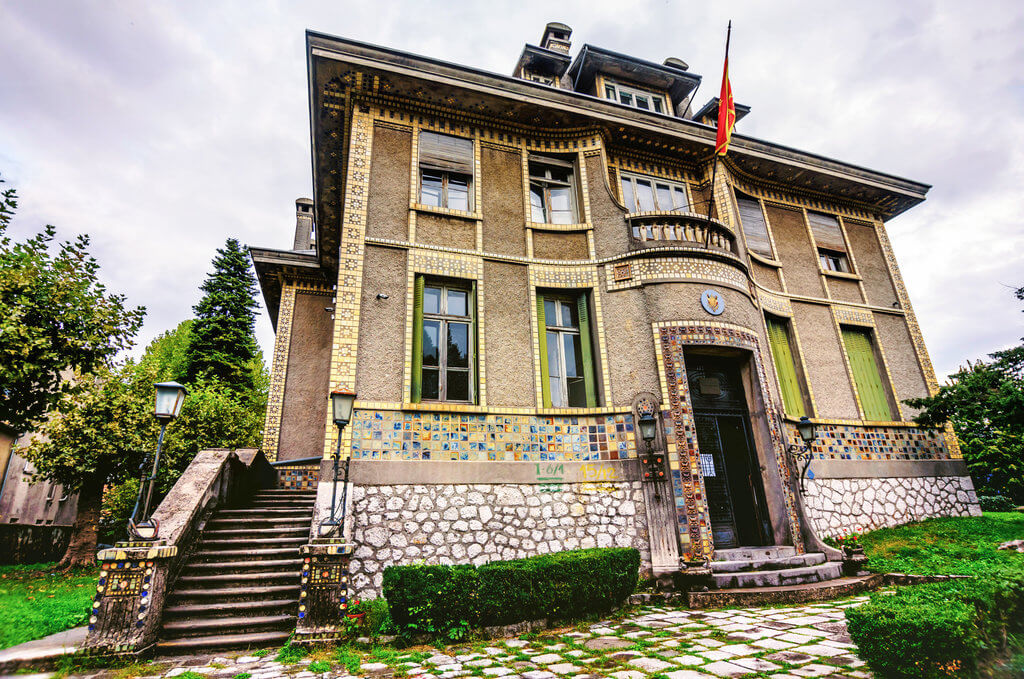 Former French Embassy in Cetinje. Image: Deposit Photos
Former French Embassy in Cetinje. Image: Deposit PhotosIn Cetinje you’ll find a range of grand buildings in various European styles in a tiny radius thanks to the embassies that were here in the 19th and 20th centuries.
One of the easiest to find is the former French Embassy with its multi-coloured tiles on the main street (Njegoševa St). It’s said that this building was supposed to be the French Embassy in Egypt but the plans accidentally got sent to Montenegro.
Typically, the Russian Embassy is the most imposing, with twin guard houses and an ornate peacock-patterned gate which leads to the commanding rust-coloured building.
13. Lipa Cave

Lipa Cave just 5km from Cetinje and is a fantastic attraction for all ages. The tours start with a mini-train ride to the entrance of the cave and then you have a guided tour through the cave system.
There are two tours to choose from and the cave fits beautifully into day trip itineraries to some of Montenegro's most historic and scenic sites.
14. Lovćen National Park
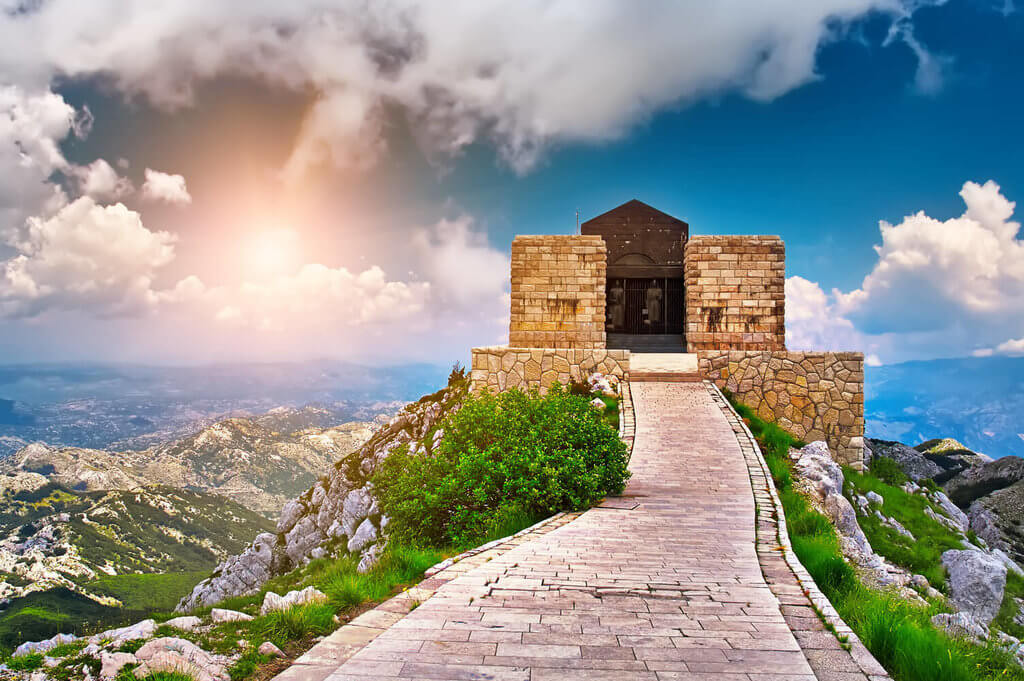 Lovćen National Park. Image: Deposit Photos
Lovćen National Park. Image: Deposit PhotosLovćen National Park lies just outside of Cetinje and combining the two makes an excellent day trip from just about anywhere in Montenegro. Along the way you’ll experience some of Montenegro’s most stunning scenery and authentic culture of the heartland of Montenegro.
If you have a rental car and are driving yourself I have a day trip itinerary you can download and take with you.
The Full Day Montenegro Tour is also an excellent day tour that includes Cetinje and Lovćen National Park. It includes a short walking tour of Cetinje and time to visit Cetinje Monastery.
If you want to spend more time exploring Cetinje I recommend choosing a private tour to Cetinje or hiring a car to drive there.
Getting to Cetinje
By Car
If you have a rental car it’s easy to drive to Cetinje. Here are the distances from the most popular destinations:
- Budva: 32km / 30 mins
- Podgorica: 36km / 35 mins
- Kotor: 44km / 1 hour (be sure to take the route through Lovćen National Park and not through Budva. This will take you up the scenic serpentine road.)
- Bar: 66km / 1 hour 10 mins
- Ulcinj: 80km / 1 hour 35 mins
- Žabljak: 154km / 2 hours 20 mins
- Kolašin: 110km / 1 hour 50 mins
There’s a parking lot by the Royal Court Garden where you can park for €5 a day.
Tours to Cetinje
You can easily visit Cetinje on a tour, even if you've only got a short time in Montenegro. Here are some of the best:
Cetinje City Tour - a one-hour walking tour of Cetinje
Full Day Montenegro Tour - includes Cetinje, Lovćen National Park, Rijeka Crnojevića and Budva. From Kotor/Budva/Herceg Novi
Historical Zig-Zag Tour - private tour that includes Cetinje, Budva, Kotor, Lovćen National Park and Njeguši village. From Kotor/Herceg Novi
Private Day Trip to Lovćen and Skadar Lake - privately tour that includes Cetinje, Lovćen National Park, Njeguši village and Skadar Lake National Park. From Bay of Kotor
Montenegro Tour - includes Cetinje, Njeguši, Kotor, Budva, Bečići, Sveti Stefan, Petrovac and Skadar Lake. From Podgorica
By Bus
There are regular intercity buses from Kotor, Budva, Risan, Herceg Novi and Podgorica to Cetinje and you can get a seat for just a few euros. You can find timetables the bus stations, on Balkan Viator and on Busticket4.me.
Cetinje Restaurants
You’ll find lots of cafés and restaurants around the centre of Cetinje. Since Cetinje is more of a local’s town than a tourist town you’ll find most of the restaurants in Cetinje serve up cheap pizzas, pastas, sandwiches and cakes. You can expect prices here to be lower than on the coast.
If you want to try traditional cuisine you’ll have to be ready for meat, and lots of it.
While you’re in an area with so many monuments and tributes to Petar II Petrović-Njegos, I recommend going for the dish that encapsulates his birthplace – njeguški steak.
This is a pork or veal steak stuffed with kajmak (local-style clotted cream) and prosciutto from Njeguši village.
An even more caloric version of this is the karađorđeva schnitzel, also known as ‘virgin’s dream’. It’s a njeguški steak that’s been crumbed and deep fried and is usually served with fries and tartare sauce.
For something sweet try a ledena kocka (ice square) or crepes.
Top Restaurants in Cetinje
Kole – traditional cuisine and huge portions at modest prices
Gradska Kafana – good-quality modern Montenegrin food at reasonable prices. A bacon and egg breakfast here goes for just €3.20
Belveder – on the road between Cetinje and Podgorica, Belveder is a favourite with locals and serves traditional cuisine
Café L’Angolo and Ka Doma – coffee
Cetinje Weather
The weather in Cetinje is generally hot and dry in summer and mild and wet in winter. With around 4,000mm of rain per year, Cetinje is one of the rainiest towns in Europe so it’s worth packing an umbrella when you visit. It can also be covered with snow in winter.
It can be a lot cooler here than on the coast, especially at night. if you plan to stay here (or anywhere in the mountains of Montenegro) you should bring some warm layers, even in summer.
Cetinje Weather by month
Month
Celcius
Fahrenheit
January
-4 – 6.4°C
24.8 – 43.5°F
February
-2.9 – 7.3°C
26.8 – 45.1°F
March
-0.4 – 10.6°C
31.3 – 51.1°F
April
3.2 – 14.7°C
37.8 – 58.5°F
May
7.3 - 20°C
45.1 - 68°F
June
10.2 – 23.7°C
50.4 – 74.7°F
July
12 – 27.2°C
53.6 - 81°F
August
11.4 – 27.1°C
52.5 – 80.8°F
September
8.4 – 23.2°C
47.1 – 73.8°F
October
4 – 17.9°C
39.2 – 64.2°F
November
1 – 12.2°C
33.8 - 54°F
December
-2.3 – 8°C
27.9 – 46.4°F
Cetinje Accommodation
Central Cetinje Hotel

Hotel Gradska Cetinje is in the centre of town next to King Nikola's Court. It's an ideal location for exploring the town and has a great restaurant and sunny terrace.
Self-Catering Apartment

Main Street Cetinje is a one bedroom apartment in the centre of town. Cetinje's attractions and restaurants are all a short walk away.
Great for Families
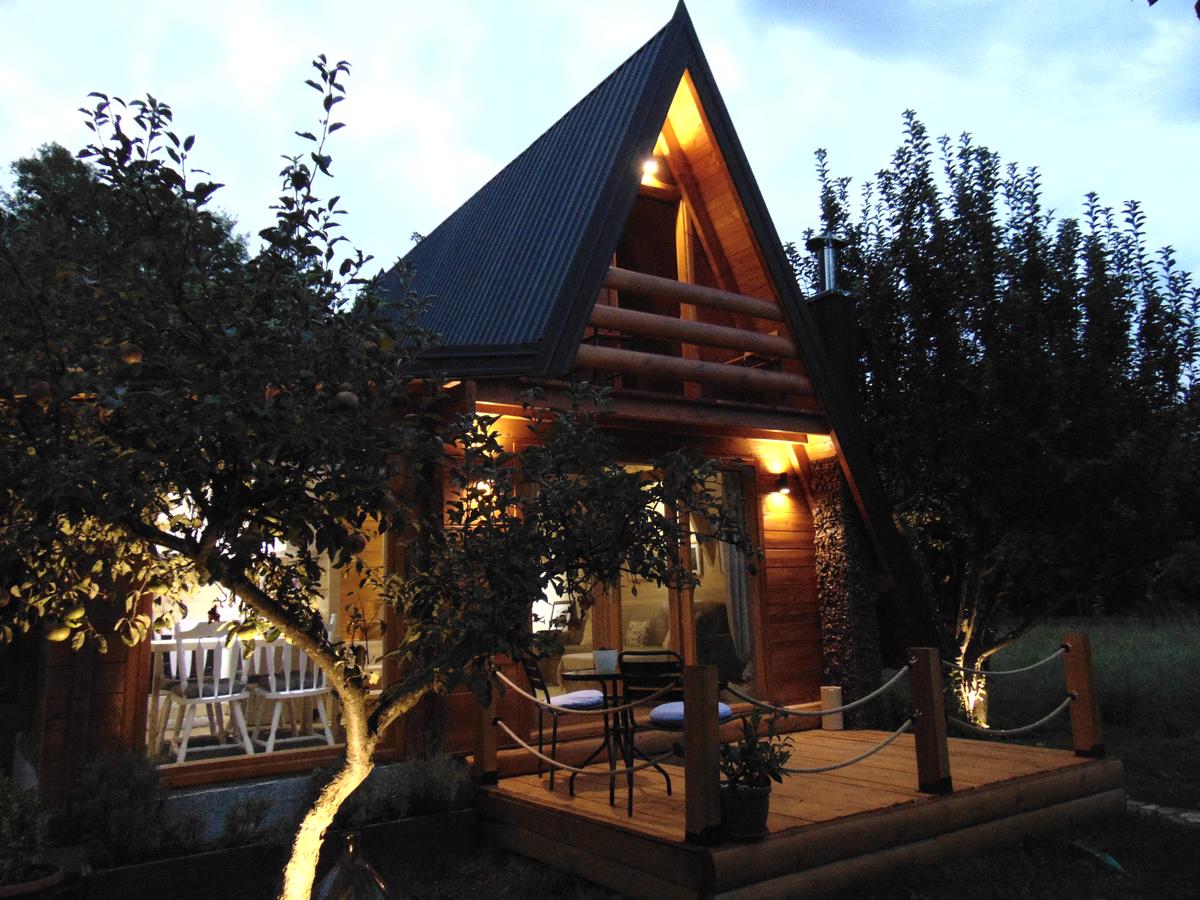
Apple House is surrounded by nature but still a short walk from Cetinje centre. This is a great choice for families and people who enjoy nature.
Pin This
- Home
- Best Destinations in Montenegro
- Best Things To Do In Cetinje








